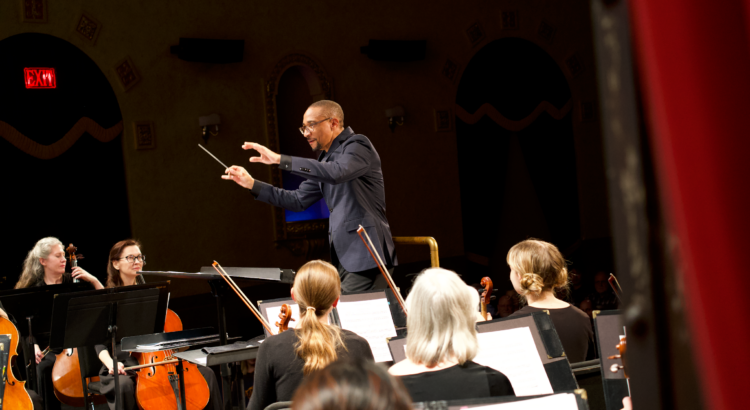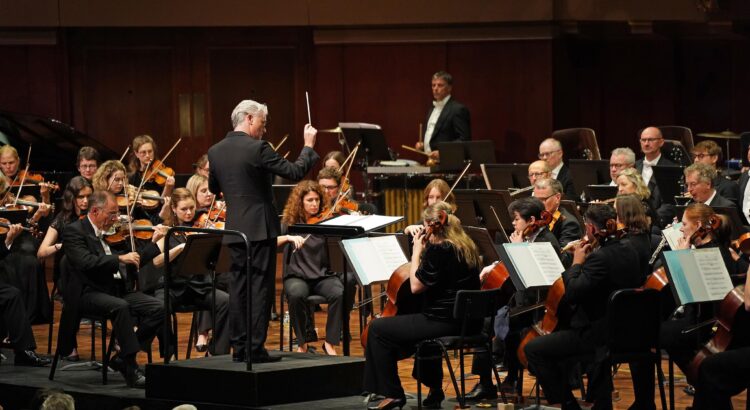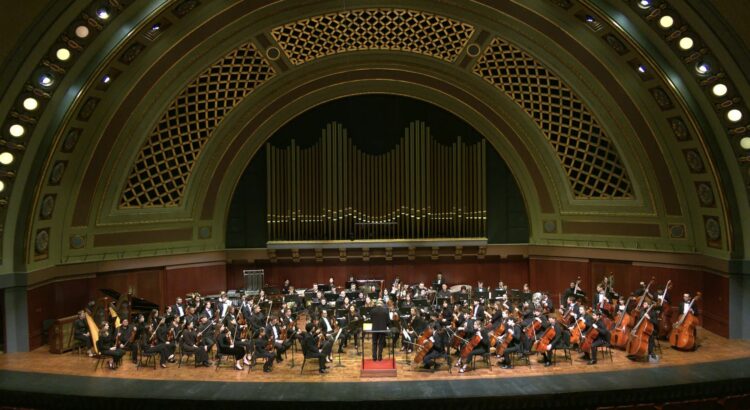Photos are provided by Peter Smith Photography
From November 14th – 17th, students from SMTD’s Department of Voice & Opera presented Hänsel und Gretel, a whimsical and comical opera inspired by the Brothers Grimm fairy tale. On opening night, I walked in expecting a darker, more traditional retelling. Having recently read the original story for my English class, the haunting imagery and fast-paced plot were fresh in my mind. What I witnessed instead was a playful and modern reinterpretation that completely reimagined the tale I thought I knew.
The opera began with Hansel and Gretel doing chores at home while horsing around. At this point, there was no dialogue; instead, the introduction was driven entirely by the music, with decorative trills and glissandos setting the tone. This lack of narration effectively established the scene, suggesting their actions were simply part of their daily routine. What stood out to me was the siblings’ dynamic, which differed from the original story. In this version, Gretel had more depth and independence. For instance, she had some attitude, and the two siblings squabbled early on. By the end, their tumultuous relationship evolved into a partnership where they worked together to overcome their struggles, making their character arcs feel more rewarding.
I was truly amazed by the quality of the music, particularly Hansel and Gretel’s vocals. Their voices projected clearly, and their vibrato and dynamics added a compelling layer to the storytelling. The pit orchestra, which was noticeably larger than those in musicals I’ve seen, played a pivotal role. Their synchronization with the actors heightened the emotional impact of the scenes, particularly in the introduction, and their technical consistency throughout the two-hour performance was impressive.
The set designs were among my favorite aspects of the production, particularly in Act II and Act III, when the visuals became increasingly surreal. The TVs hanging around the stage were a quirky and creative touch that enhanced the eerie atmosphere of the woods and the chaotic energy of the Witch’s house. By displaying images like green mist and blinding lights, they played a crucial role in establishing the mood of each scene. The Witch’s house, made entirely of brightly branded cereal boxes, was both unexpected and amusing, providing a modern twist on the traditional gingerbread aesthetic.
The Witch was undoubtedly my favorite character. From the moment she appeared on stage, I was completely captivated by her eccentric and flamboyant costume. It was a riot of bright colors and peculiar accessories—such as eating utensils—and cleverly mirrored her chaotic personality and desire to consume the children. Her absurd and unpredictable presence made her scenes incredibly fun to watch, and I found myself smiling throughout. The audience shared my feelings, as frequent laughter echoed during her antics.
Overall, this was an enjoyable performance. The chaotic and playful nature of the plot kept me engaged, especially when the production deviated from the original tale in surprising ways. The opera felt like a magical adventure that breathed new life into a familiar fairy tale. However, since the entire performance was sung in German, I often had to look away from the stage to read the subtitles, which detracted slightly from my experience but didn’t overshadow the production’s many strengths. I highly recommend this production to anyone who enjoys fairy tales and is open to seeing them reimagined in unexpected and creative ways.











